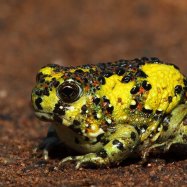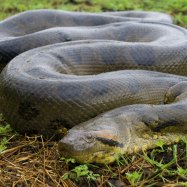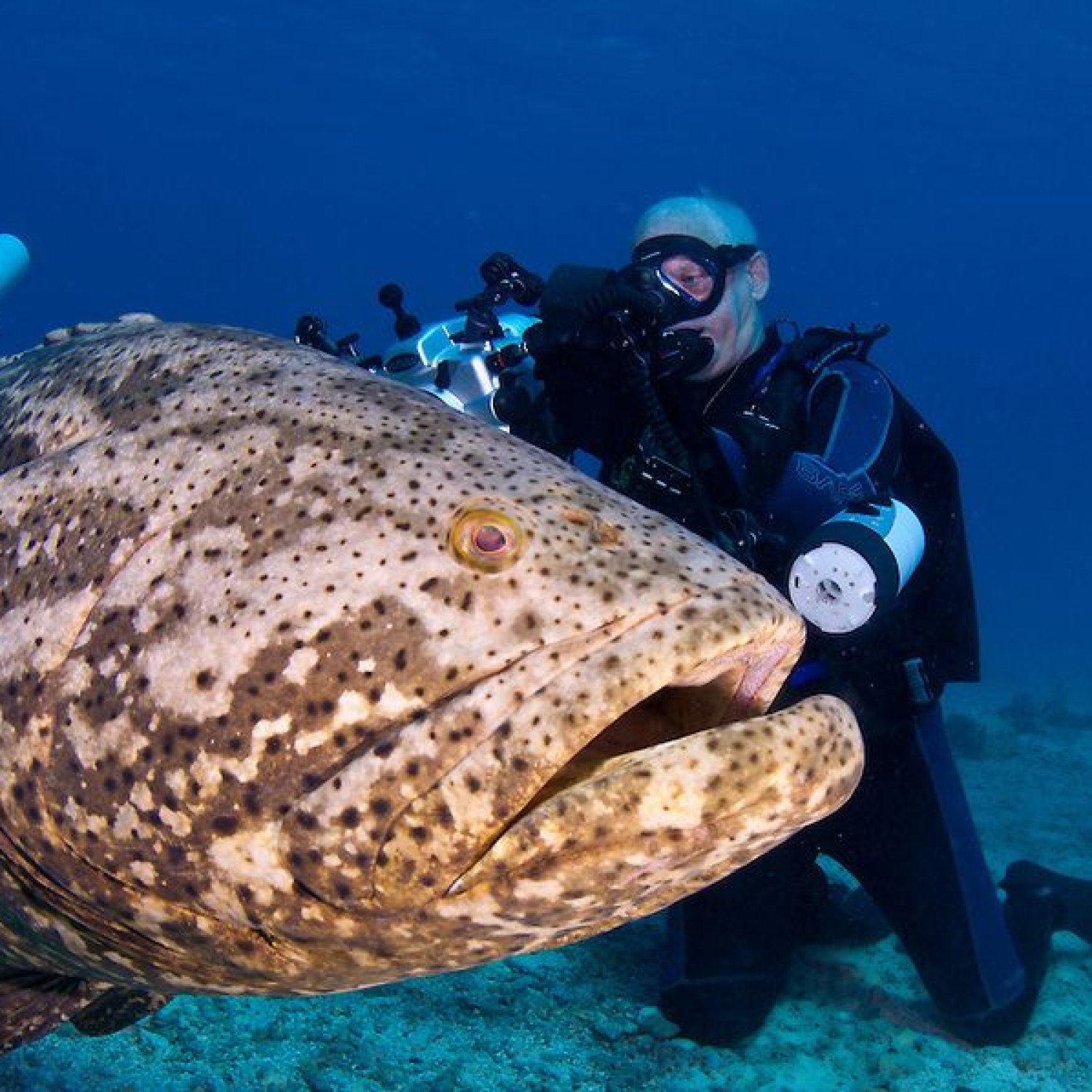
Goliath Grouper
Up to 8 feet
The Goliath Grouper, found in coastal areas, is an impressive fish that can reach up to 8 feet in length. Belonging to the Serranidae family, this large and robust creature has an elongated body shape. Keep an eye out for this powerful swimmer on your next dive or fishing trip! #GoliathGrouper #coastalareas #Serranidae #underwater #fishing
Animal Details Summary:
Common Name: Goliath Grouper
Kingdom: Animalia
Habitat: Coral reefs, shipwrecks, and rocky bottoms
Introduction
When it comes to the underwater world, there are many creatures that captivate our imagination. From colorful tropical fish to graceful sea turtles, the ocean holds an abundance of wonders. However, one creature stands out from the rest with its sheer size and strength – the Goliath Grouper.As the name suggests, the Goliath Grouper is a true giant of the sea Goliath Grouper. This majestic creature is known for its impressive size, unique appearance, and powerful presence in the Atlantic Ocean. In this article, we will dive deeper into the world of the Goliath Grouper and discover what makes this fish one of the most fascinating creatures in the ocean.
An Overview of the Goliath Grouper
The Goliath Grouper, also known by its scientific name Epinephelus itajara, is a member of the Serranidae family. This family consists of a large number of fish species, including groupers, seabasses, and hindfish. The Goliath Grouper is the largest of all groupers and is considered one of the biggest fish in the Atlantic Ocean.This impressive fish is also known by various other names, including the Atlantic Goliath Grouper, and the Black Jewfish. In different parts of the world, it is referred to as Camouflage Grouper, Bumblebee Grouper, and Giant Sea Bass. However, regardless of its name, one thing is for sure – the Goliath Grouper is a true giant in the underwater world.
Physical Characteristics: Appearance and Size
The Goliath Grouper has a unique and impressive appearance that makes it stand out from other fish species Great White Shark. With a large, robust, and elongated body, this fish can grow up to 8 feet in length and weigh up to 800 pounds, making it one of the largest fish in the world.One of the most striking features of the Goliath Grouper is its coloration, which can vary from olive to gray with dark blotches. This coloration allows the fish to blend in with its surroundings, making it challenging for predators to spot. Additionally, the Goliath Grouper has a large mouth that contains sharp, cone-shaped teeth, perfect for catching its prey.
Another unique physical characteristic of the Goliath Grouper is its ability to change its body color to communicate with other groupers. It can also produce a distinctive booming sound by vibrating its swim bladder, which can be heard up to a mile away.
Habitat and Geographical Distribution
The Goliath Grouper can be found in the tropical and subtropical waters of the Atlantic Ocean, from Florida to southern Brazil, including the Gulf of Mexico and the Caribbean Sea. These groupers prefer to inhabit shallow coastal areas, such as coral reefs, shipwrecks, and rocky bottoms.The Goliath Grouper is an ambush predator, meaning it waits patiently for its prey to approach before quickly engulfing it in one big bite. Its large size and powerful jaws make it an apex predator in its habitat, feeding on a variety of marine creatures, including crustaceans, fish, and even smaller sharks.
Behavior and Feeding Method
The Goliath Grouper is a solitary fish that spends most of its time lurking in the depths of the ocean, waiting for an opportunity to ambush its prey. However, during breeding season, these groupers gather in large numbers in specific mating spots.One of the most fascinating behaviors of the Goliath Grouper is its ability to change its sex. While most groupers are protogynous hermaphrodites, meaning they start as females and then change into males, the Goliath Grouper is a protandrous hermaphrodite, starting as males and changing into females.
The Goliath Grouper's feeding method is a crucial aspect of its behavior. As ambush predators, they use their camouflage and ambush techniques to catch their prey. They often use their large mouths and suction power to engulf their victims in one swift movement.
The Impact of Environmental Factors
The Goliath Grouper is an essential species in the marine ecosystem, with a significant impact on its surrounding environment. However, this fish has faced numerous threats, which have led to a decline in its population.One of the significant environmental threats facing the Goliath Grouper is overfishing. Due to its large size and commercial value, this fish became a popular target for commercial and recreational fishermen. In the past, the Goliath Grouper was even considered a delicacy and was heavily overfished, leading to a significant decline in its population.
This drove several countries to impose strict regulations on the fishing of Goliath Groupers, including the United States, Mexico, and Brazil. In the United States, the fish is strictly protected, and fishing for Goliath Groupers is prohibited. This has helped in the slow recovery of the Goliath Grouper population, but it is still considered vulnerable to extinction.
The Future of the Goliath Grouper
Thanks to conservation efforts and strict regulations, the Goliath Grouper has slowly started to make a comeback. In recent years, there has been an increase in sightings of this majestic fish, a promising sign that its population is on the rise.However, it is essential to continue monitoring and protecting this species to ensure its full recovery. With ongoing environmental threats such as climate change, pollution, and habitat destruction, it is crucial to maintain and enforce these regulations to protect the Goliath Grouper and other marine species.
Conclusion
In conclusion, the Goliath Grouper is not just a massive fish with an intimidating appearance, but it is also a vital part of the marine ecosystem. This majestic creature plays a significant role in keeping the balance of the underwater world, and it is our responsibility to protect and preserve it for future generations.With its impressive size, unique appearance, and fascinating behaviors, the Goliath Grouper is truly a wonder of the ocean. Its powerful presence in the Atlantic Ocean serves as a reminder of the magnificence of nature and the importance of preserving it for all living creatures.
Next time you visit the ocean or go scuba diving, keep an eye out for the Goliath Grouper. You may just catch a glimpse of this legendary giant of the sea.

Goliath Grouper
Animal Details Goliath Grouper - Scientific Name: Epinephelus itajara
- Category: Animals G
- Scientific Name: Epinephelus itajara
- Common Name: Goliath Grouper
- Kingdom: Animalia
- Phylum: Chordata
- Class: Actinopterygii
- Order: Perciformes
- Family: Serranidae
- Habitat: Coral reefs, shipwrecks, and rocky bottoms
- Feeding Method: Ambush predators
- Geographical Distribution: Atlantic Ocean
- Country of Origin: United States, Mexico, and Brazil
- Location: Coastal areas
- Animal Coloration: Olive or gray with dark blotches
- Body Shape: Large, robust, and elongated
- Length: Up to 8 feet
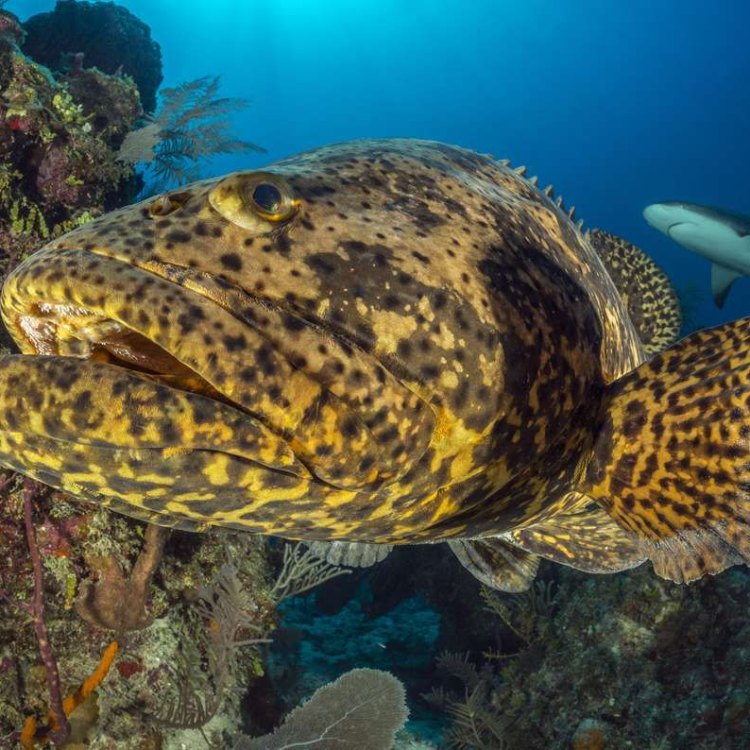
Goliath Grouper
- Adult Size: Up to 800 pounds
- Average Lifespan: Around 35 to 50 years
- Reproduction: Sexual
- Reproductive Behavior: Protogynous hermaphrodites
- Sound or Call: Low-frequency boom
- Migration Pattern: Limited movements
- Social Groups: Solitary
- Behavior: Nocturnal and solitary
- Threats: Overfishing and habitat destruction
- Conservation Status: Critically endangered
- Impact on Ecosystem: Keystone species
- Human Use: Sport fishing and aquarium trade
- Distinctive Features: Large size and thick lips
- Interesting Facts: Can change coloration to camouflage with surroundings
- Predator: Humans
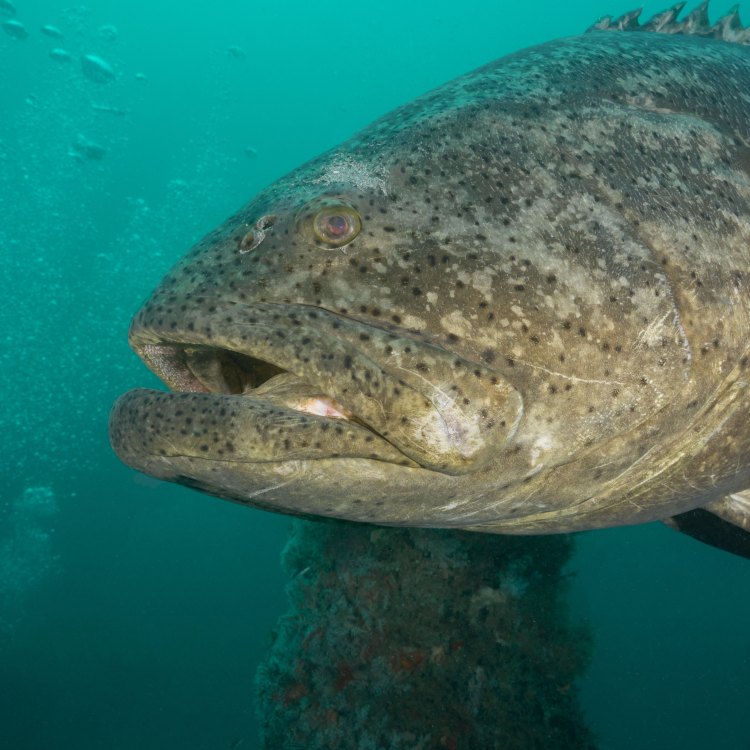
Epinephelus itajara
The Mighty Goliath Grouper: A Fascinating Giant of the Sea
Underneath the vast, blue waters of the ocean lies a creature that commands awe and respect - the Goliath Grouper. With its massive size and unique features, this fish is truly a wonder to behold. In this article, we will dive deep into the world of the Goliath Grouper and discover what makes it a truly remarkable species.A Force to Be Reckoned With: Adult Size and Average Lifespan
The Goliath Grouper, also known as the Atlantic Goliath Grouper, is a species of fish that belongs to the Epinephelidae family PeaceOfAnimals.Com. It is one of the largest bony fishes in the world, with an average length of 8 feet and an incredible weight of up to 800 pounds. To put things into perspective, that is almost the weight of two fully grown grizzly bears!But the Goliath Grouper's impressive size is not the only thing that makes it stand out. This fish can also live for an astonishing 35 to 50 years, which is significantly longer compared to other fish species. This means that a Goliath Grouper can potentially outlive a human!
Sexual Reproduction and Protogynous Hermaphrodites
Just like many other sea creatures, the Goliath Grouper reproduces sexually. This means that they require a male and female to come together and fertilize eggs. However, what makes this fish unique is its reproductive behavior - they are protogynous hermaphrodites.Protogynous hermaphroditism is a type of sequential hermaphroditism, where an individual begins life as a female and later changes into a male. This occurs when a dominant male grouper dies, and the largest female in the group changes sex and becomes the new male. This behavior ensures the survival of the species since there is always a male present to fertilize the eggs German Longhaired Pointer.
A Low-Frequency Boom: The Goliath Grouper's Sound or Call
One of the most interesting things about the Goliath Grouper is its low-frequency boom. This sound, also known as a "thunderclap," is produced by the fish's swim bladder, a gas-filled organ used for buoyancy control. The noise can be heard up to a mile away and is used as a way to communicate with other groupers or as a warning to potential predators.In addition to their low-frequency boom, Goliath Groupers also use body language to communicate. They can raise their dorsal fins as a sign of aggression or lift their pectoral fins to indicate submission.
Limited Movements and Solitary Social Groups
Unlike some fish species that migrate long distances, Goliath Groupers have a limited movement pattern. They tend to stay within a certain area, usually a few square miles, throughout their lives. This behavior is also reflected in their social groups, as Goliath Groupers are mostly solitary creatures.They are most often seen alone or in small groups of 3 to 4 individuals. However, during mating season, they form larger groups to reproduce. This limited movement and solitary nature make it challenging to track and study these magnificent creatures.
A Nocturnal and Solitary Lifestyle
Another interesting behavior of the Goliath Grouper is that they are nocturnal. This means that they are most active at night and spend their days resting in caves, crevices, or under ledges. They are also solitary hunters, waiting patiently in their hiding spots for prey to come their way.Their diet consists of a variety of fish, including snapper, parrotfish, and even small sharks. They are also known to eat crustaceans, such as crabs and lobsters. With their massive size, they can easily swallow their prey whole.
Threats to the Goliath Grouper: Overfishing and Habitat Destruction
Despite its grandeur and resilience, the Goliath Grouper is facing significant threats that have led to its critically endangered status. The main threat to their survival is overfishing. They were heavily targeted by commercial and recreational fishermen, and their numbers drastically declined in the 1970s.In addition to overfishing, habitat destruction has also played a role in the decrease of the Goliath Grouper population. As these fish prefer to stay in one area, they are highly affected by any changes or damage to their habitat, such as coral reef degradation, pollution, and coastal development.
A Keystone Species with a Vital Impact on the Ecosystem
The Goliath Grouper plays a significant role in the ecosystem, making it a keystone species. This means that their presence is crucial in maintaining the balance and diversity of the environment. They are top predators, and their presence keeps other fish populations in check.Moreover, their large size stirs up sediment and creates small pits on the seafloor, which provides shelter for many small organisms and helps with nutrient cycling. The decline of the Goliath Grouper has a cascading effect on the marine ecosystem, causing a disruption in the delicate balance.
Human Use: Sport Fishing and Aquarium Trade
The Goliath Grouper has also gained popularity in the sport fishing industry due to its large size and strength. It is considered a prized catch by anglers, and the demand for catching one has caused further decline in their population.In addition to sport fishing, the Goliath Grouper is also highly sought after in the aquarium trade. However, their massive size and specific habitat requirements make it challenging to maintain them in captivity. This often results in high mortality rates and does not contribute to the conservation of this species.
Distinctive Features: Large Size and Thick Lips
It is impossible to talk about the Goliath Grouper without mentioning its unique features. Its massive size is, of course, one of the most notable characteristics, but it is not just in their length and weight. This fish has an enormous mouth, capable of swallowing prey almost half its size. Its mouth muscles also allow it to create powerful suction to catch its meals.Another distinctive feature of the Goliath Grouper is its thick lips. These lips serve as protection from sharp objects, such as rocks or coral, and also help the fish create a vacuum to suck in their prey.
Interesting Facts: Master of Camouflage and Human Predators
Aside from its size and behavior, the Goliath Grouper also has some intriguing and lesser-known facts. For one, they are masters of camouflage. They have the ability to change their coloration to match their surroundings, making them almost invisible to their prey and predators.Unfortunately, their excellent camouflage skills do not protect them from one of their most significant predators - humans. Despite being a critically endangered species, Goliath Groupers are still illegally caught and sold in markets, leading to further decline in their population.
The Future of the Goliath Grouper: Conservation Efforts and Importance of Preservation
With its critical endangered status and ongoing threats, it is evident that the Goliath Grouper needs our help to ensure its survival. Conservation efforts are currently in place to protect this magnificent species, including bans on fishing and protection of their habitats.The International Union for Conservation of Nature (IUCN) has listed the Goliath Grouper as "critically endangered" since 1994, and it is also protected under the Endangered Species Act in the United States. However, more needs to be done to raise awareness and take action to preserve this keystone species.
In conclusion, the Goliath Grouper is truly a fascinating giant of the sea. Its impressive size, unique features, and vital role in the ecosystem make it a species that demands our attention and protection. It is our responsibility to ensure that this magnificent fish continues to thrive in our oceans for generations to come. Let us all play our part in preserving the Goliath Grouper and the delicate balance of our marine ecosystems.
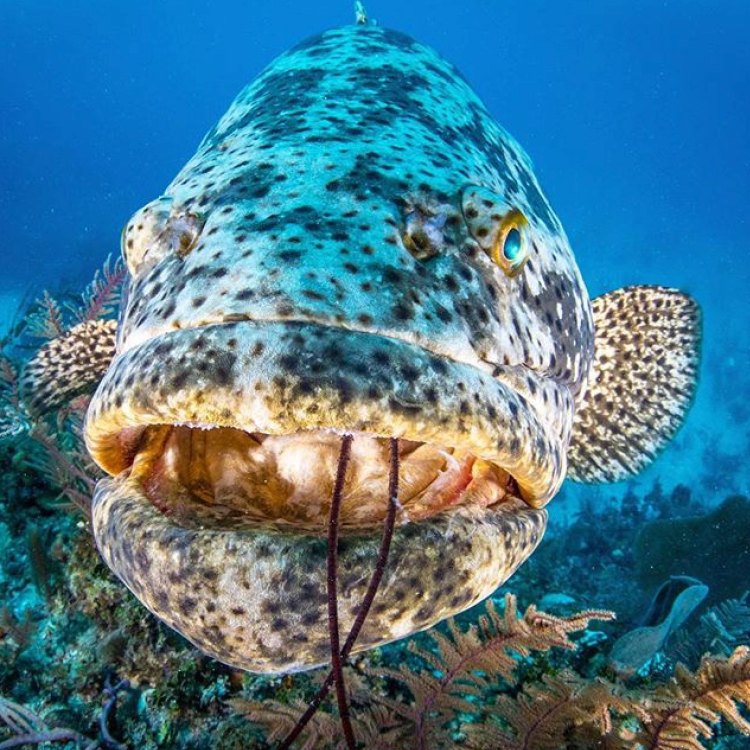
Introduction
Disclaimer: The content provided is for informational purposes only. We cannot guarantee the accuracy of the information on this page 100%. All information provided here may change without prior notice.





